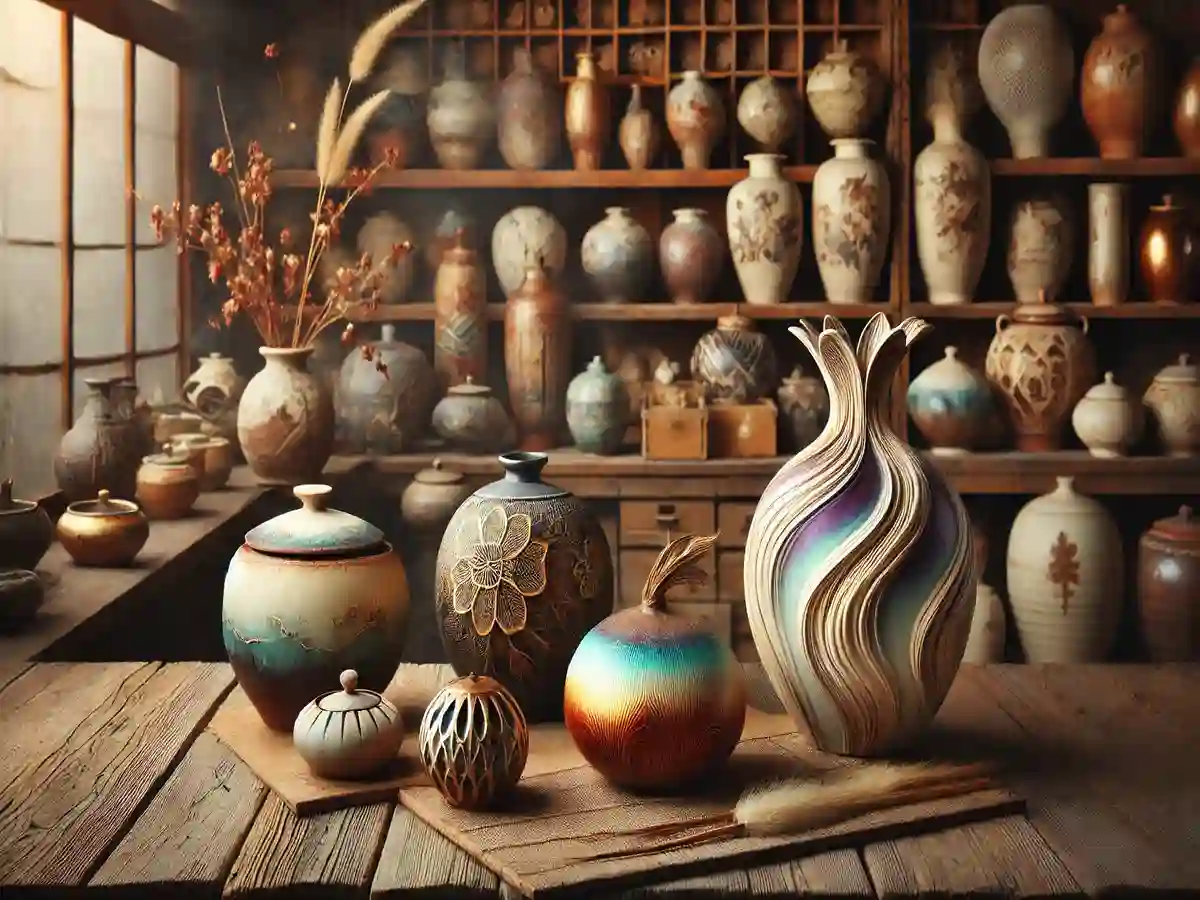Raku pottery, deeply rooted in Japanese culture, is a blend of traditional craftsmanship and history. Its unique beauty and captivating manufacturing process make this pottery stand out. Raku pottery continues to captivate artists and consumers, bridging the serene tea rituals of Japan with modern Western interpretations.
Raku Fired Pottery: The Craft of Controlled Chaos
Known for its unique firing method, raku pottery is removed from the kiln while still hot. The sudden exposure to air or combustible materials causes dramatic color differences and cracked textures. The Japanese potter uses controlled chaos to create unique works by welcoming the element’s volatility. Raku pottery’s porous character and low firing temperatures and quick cooling help to explain why every piece is evidence of the harmony between fire and clay.
Japanese Raku Pottery: Elegance Legacy
In the realm of ceramics, Japanese Raku pottery—also known as Raku-yaki—respectably retains place. Originally created for the Japanese tea ritual in the sixteenth century by Chojiro under the direction of tea master Sen no Rikyu. The term “Raku” translates to “enjoyment” or “comfort,” reflecting the simplicity and natural beauty in these works. With its hand-shaped forms and wabi-sabi look, Japanese Raku pottery captures the beauty of imperfection and the passing of time.
Western Twist in Horsehair Raku Pottery
Horsehair Raku pottery introduces a Western twist to the traditional Raku process. This technique involves draping horsehair over the heated pottery surface; as a result, it carbonizes and creates delicate, smokey patterns. The final result, therefore, showcases intricate smokey patterns that enhance the appeal and complexity of the pottery. This method highlights the flexibility of Raku pottery so that artists may try different organic materials, such as feathers or even human hair, to get unusual finishes.
Masters of Fire and Clay in Raku Pottery
Skilled in their craft, Raku pottery artists adeptly balance spontaneity and control. These artists challenge the limits of Raku ceramics by drawing influence from both traditional Japanese techniques and modern inventions. Their creations frequently show a strong awareness of the resources they employ and a close relationship to nature. Through their works, Raku pottery artists encourage us to appreciate the fleeting nature of art and the allure of imperfection.
Raku Pottery Vase: Beautiful Vessel
The art form of raku pottery vases showcases beautiful illustrations that highlight both adaptability and visual attractiveness. Every vase is a different work of art, highlighting the vivid colors and textures Raku firing produces. From shiny metallic sheens to matte, earthy tones, the technique lets one create a great spectrum of surfaces. These vases are not only useful objects but also striking works of art that, with their presence, may change any environment. The appeal of a Raku pottery vase lies in its ability to harmonically encapsulate the essence of fire and earth within a single form.
Raku Pottery Copper: A Color Dance
Celebrated for their brilliant iridescent colors achieved through copper glazes, copper Raku pottery responds to the atmosphere during the firing process, resulting in a spectrum of hues from deep reds to sparkling blues and greens. This method emphasizes the transforming potential of Raku firing—where the interaction of heat and chemicals produces a visual feast. Copper Raku pottery provides a window into the wonderful realm of alchemy and craftsmanship, therefore reflecting the dynamic and always changing character of this ancient art form.
In Brief
Raku pottery is a fascinating fusion of history and modernism whereby the erratic dance of fire and clay produces amazing works of art. From its origins in Japanese tea ceremonies to its modern interpretations, raku pottery inspires and enchants. Raku pottery enables us to celebrate the beauty of imperfection and the delight of creation, whether through the vivid appeal of copper glazes or the smokey elegance of horsehair methods.

